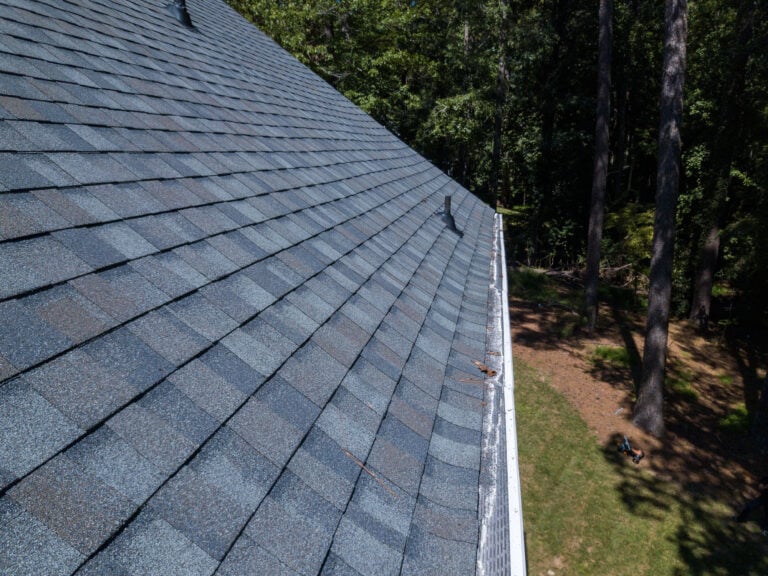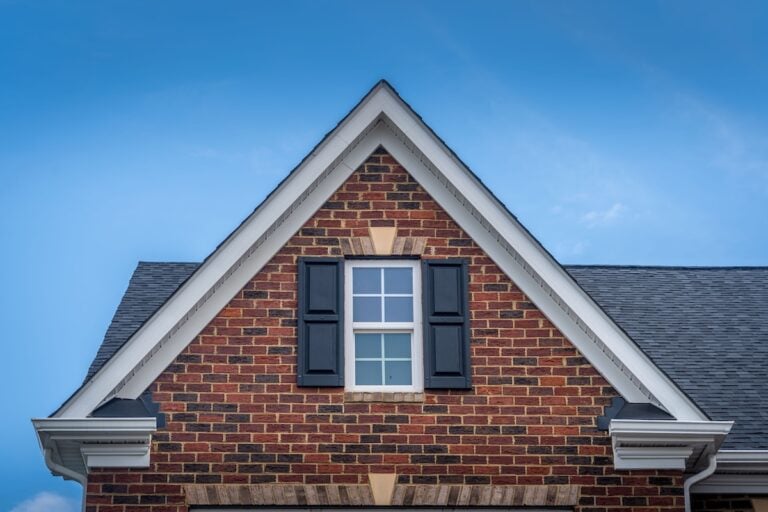Hailstorms can wreak havoc on your home, and one of the most vulnerable areas is your roof. The aftermath of a hailstorm often requires immediate attention to prevent further damage.
This guide aims to equip homeowners with the knowledge they need to address hail damage roof repair effectively. We’ve got you covered whether you’re dealing with:
- Minor dents
- Major damage
- Significant structural issues
What is Hail Damage?

Hail damage occurs when hailstones, which can range from pea-sized to as large as grapefruits, strike your roof. The impact can cause various types of damage, including dents, cracks, and even punctures in roofing materials. Understanding the extent of hail damage is crucial for effective repair and insurance claims.
Types of Hail Damage
- Cosmetic Damage: Minor dents and scratches that don’t affect the roof’s functionality.
- Functional Damage: Cracks, punctures, and other issues that compromise the roof’s integrity.
- Water Damage: Resulting from roof punctures that allow water to seep into the home.
Why Timely Roof Repair is Essential
Ignoring hail damage can lead to more severe problems down the line, including water leaks, mold growth, and structural instability. Timely roof repair ensures that minor issues don’t escalate into costly repairs.
Risks of Delaying Repairs
- Water Infiltration: Even small punctures can allow water to seep into your home, causing extensive water damage.
- Mold and Mildew: Moisture from leaks can lead to mold and mildew growth, posing health risks.
- Structural Damage: Prolonged exposure to the elements can weaken the structural integrity of your roof.
- Increased Costs: Delaying repairs can result in more extensive damage, leading to higher repair costs.
Identifying Hail Damage
Before you can begin repairs, it’s essential to accurately identify the extent of the damage. Here are some steps to help you assess hail damage on your roof.
Visual Inspection
- Ground-Level Check: Look for dents and dings on gutters, downspouts, and siding. Check for granules from asphalt shingles in your gutters.
- Roof-Level Check: Inspect shingles for cracks, dents, or missing pieces. Examine metal components like vents and flashing for dents.
Professional Inspection
While a visual inspection can give you a general idea, it’s wise to hire a professional roofer for a thorough assessment. They have the expertise to identify hidden damage that you might miss.
3 Steps to Take After Discovering Hail Damage
Once you’ve identified hail damage, it’s crucial to take immediate action. Here’s a step-by-step guide to help you through the process.
1) Document the Damage
- Take Photos: Capture clear images of the damage from multiple angles. Make sure to include date and time stamps if possible.
- Keep Records: Maintain a log of all damages, including notes on the extent and location of the damage. Keep receipts for any temporary repairs or materials purchased.
2) Contact Your Insurance Company
- Report the Damage: Contact your insurance provider to report the damage. Provide them with photos and documentation.
- Schedule an Adjuster Visit: An adjuster will visit your home to assess the damage and estimate repair costs.
3) Temporary Repairs
While waiting for professional repairs, consider making temporary fixes to prevent further damage. Use tarps or roofing cement to cover exposed areas.
Choosing the Right Roofing Contractor
Selecting a reliable roofing contractor is crucial for quality repairs. Here are some tips to help you choose the best contractor for your needs.
Research and Recommendations
- Ask for Referrals: Seek recommendations from friends, family, and neighbors. Check online reviews and ratings on platforms like Yelp and Google.
- Verify Credentials: Ensure the contractor is licensed and insured. Check for any complaints with the Better Business Bureau (BBB).
Get Multiple Quotes
- Request Estimates: Obtain at least three written estimates from different contractors. Compare the scope of work, materials, and pricing.
- Ask Questions: Inquire about their experience with hail damage roof repair. Ask for references from previous clients.
Review Contracts
Before signing any contract, carefully review the terms and conditions. Ensure it includes details about the scope of work, materials, timeline, and payment schedule.
The Roof Repair Process
Understanding the roof repair process can help you prepare and ensure everything goes smoothly.
Initial Assessment
- Detailed Inspection: The contractor will conduct a comprehensive inspection to assess the damage. They will provide a detailed report and repair plan.
- Material Selection: Choose the appropriate materials for your roof type (asphalt shingles, metal roofing, etc.).
Repair and Replacement
- Remove Damaged Materials: The contractor will remove damaged shingles, tiles, or other roofing materials.
- Repair Underlayment: Any damaged underlayment or decking will be repaired or replaced.
- Install New Materials: New shingles, tiles, or metal panels will be installed. Flashing and vents will be inspected and replaced if necessary.
Final Inspection
- Quality Check: The contractor will perform a final inspection to ensure the repairs meet industry standards.
- Cleanup: Debris and leftover materials will be removed from your property.
Post-Repair Maintenance
- Regular Inspections: Schedule regular roof inspections to catch any new damage early.
- Keep Gutters Clean: Ensure gutters are free of debris to prevent water backup and damage.
DIY vs. Professional Repair
While some homeowners may consider DIY repairs, it’s essential to weigh the pros and cons.
DIY Repairs
✅ Pros:
- Cost Savings
- Immediate Action
❌ Cons:
- Lack of Expertise
- Safety Risks
- Potential for Incomplete Repairs
Professional Repairs
✅ Pros:
- Expertise and Experience
- Proper Tools and Equipment
- Warranty and Insurance
❌ Cons:
- Higher Initial Cost
- Scheduling Delays
Preventing Future Hail Damage
While you can’t control the weather, there are steps you can take to minimize future hail damage.
Invest in Impact-Resistant Materials
- Class 4 Shingles: Consider upgrading to Class 4 impact-resistant shingles.
- Metal Roofing: Metal roofs offer excellent durability and hail resistance.
Regular Maintenance
- Routine Inspections: Schedule regular roof inspections to catch and address minor issues before they escalate.
- Tree Trimming: Trim overhanging branches to prevent them from falling on your roof during storms.
Install Protective Measures
- Hail Guards: Install hail guards on skylights and vents.
- Storm Shutters: Consider adding storm shutters to protect windows and doors.
Hail Storm? Call On Palladium

Hail damage roof repair is a critical task that homeowners should address promptly to avoid more severe issues down the road. Don’t wait until the next storm hits—be proactive and protect your home today.
For personalized advice and expert assistance, consider reaching out to Palladium Roofing. Your home is your sanctuary—make sure it’s well-protected. Contact us today for a free consultation and estimate. Our team of experts is here to help you every step of the way. Don’t wait—secure your home’s future now!





